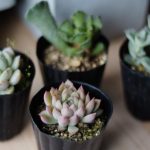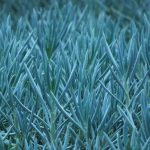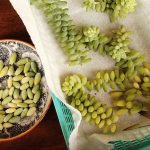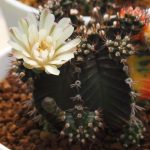Ever heard of a plant named after a candy? Sedum rubrotinctum, known as the jelly bean plant, is as effortless to maintain as it is charming. Dive into this guide by Rachel Garcia for valuable insights on caring for this unique succulent.
Instead of a meal followed by dessert, consider planting jelly beans! Don’t worry; we’re talking about the succulent variety here. Sedum rubrotinctum, also known as the jelly bean plant, is a resilient beauty that demands little attention – perfect for busy gardeners.
The chubby leaves of Sedum rubrotinctum bear a striking resemblance to beans, particularly jelly beans. While their usual color is green, a touch of full sunlight will turn their tips into a vibrant red hue.
Caring for the jelly bean plant is a breeze. Below are the essential details you need to kick off your gardening journey:
Overview
|
Plant Type
Succulent
Family
Crassulaceae
Genus
Sedum |
Species
Sedum rubrotinctum
Exposure
Full sun
Height
12″ |
Watering Requirements
Low
Maintenance
Low |
Succulent mix
Understanding the Jelly Bean Plant

The Jelly Bean plant, a hybrid of Sedum pachyphyllum and Sedum stahlii, is native to Mexico. It flourishes in USDA Zones 9-11 but can survive in slightly colder climates when shielded. In temperatures below 20°F (-7°C), it’s advisable to plant this succulent in a container for easy indoor relocation.
Pork and beans produce charming yellow, star-shaped flowers in spring. These woody stems sprawl and provide excellent ground cover. Sedum rubrotinctum is also well-suited for container growth.
Due to potential skin irritation for humans and pets, caution is advised around these plants. Despite their tempting name, Jelly Bean plants are not edible.
Planting Guidelines
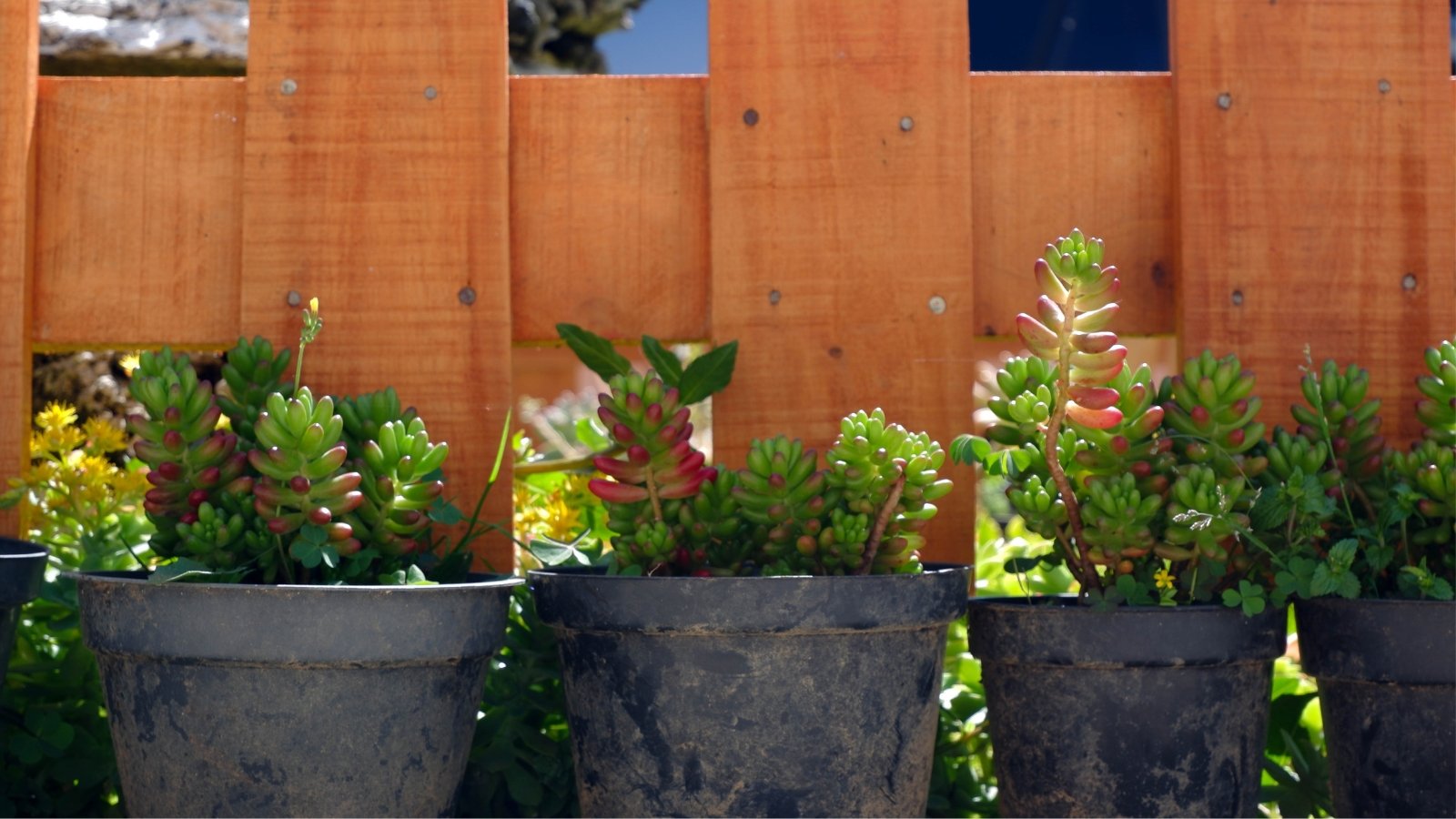
Sedum rubrotinctum is commonly grown in containers, but it can also thrive directly in gardens.
In warm areas, pick a sunny spot for outdoor planting, allowing branches to sprawl and cover bare soil. In cooler climates, starting with pots or transplanting to pots in fall is recommended.
When selecting a planting spot, prioritize drainage. These succulents prefer sandy, well-drained soil. Avoid heavy clay; enhance other soils with compost and sand for improved drainage before planting.
When planting, gently remove the plant from its container and loosen the roots. Plant at the same depth as the original container to prevent fungal issues. Don’t bury too deep.
Water dry soil immediately or wait if it’s slightly damp, allowing time for root acclimatization before resuming growth to prevent root rot.
Cultivation Tips

Easy to care for, the jelly bean plant thrives with the right setup and care routine, making it a hassle-free addition to your botanical collection.
Light
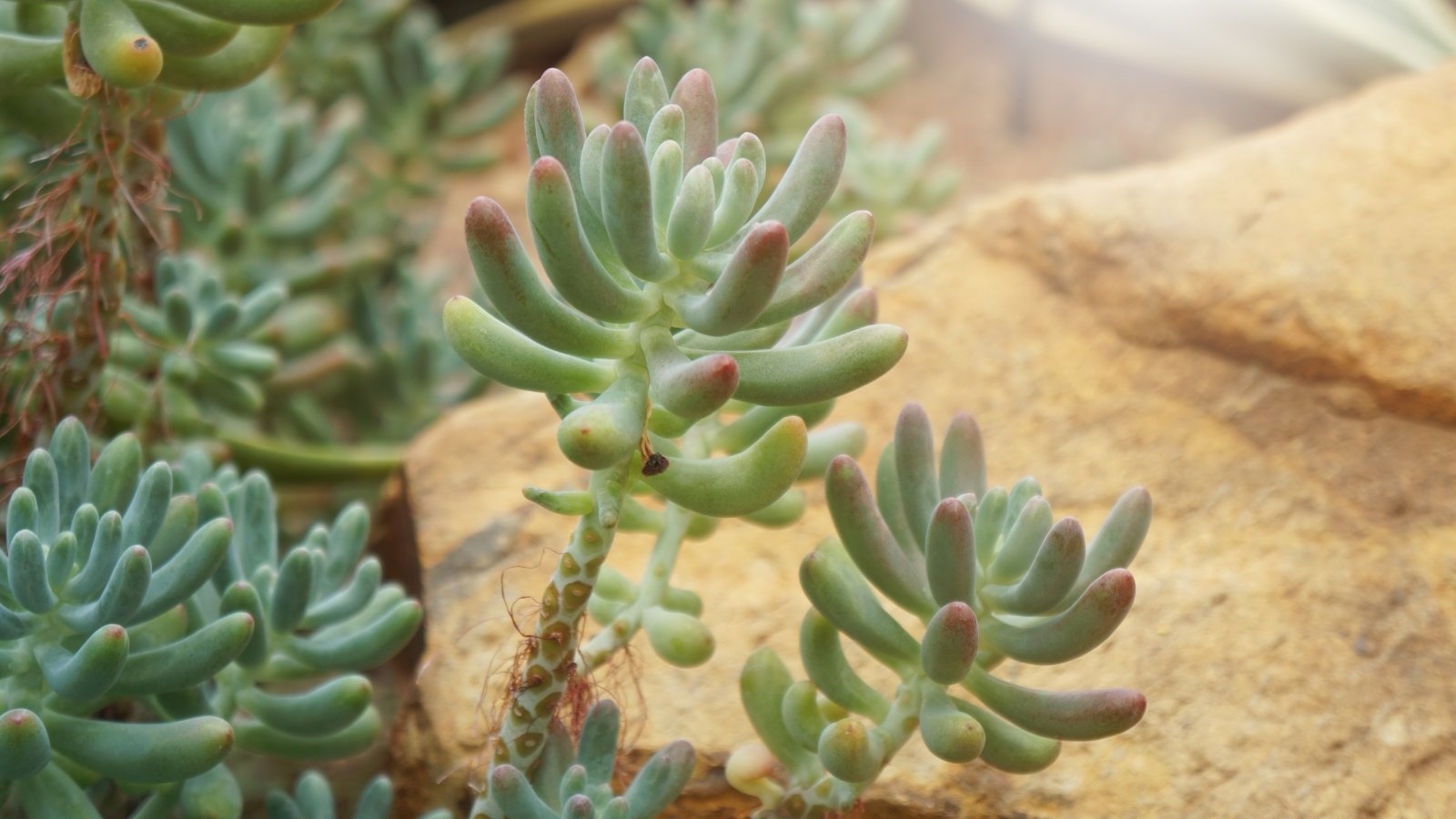
Ideal lighting conditions for jelly bean plants range from full sun to partial shade, enhancing the vibrancy of their hues. Protect them from prolonged exposure to intense sunlight and high temperatures to prevent sunburn, especially during hot summer afternoons.
To ensure healthy growth indoors, place your succulent by a south-facing window for access to direct sunlight. Inadequate light indoors may result in leggy stems as the plant stretches in search of light.
Water
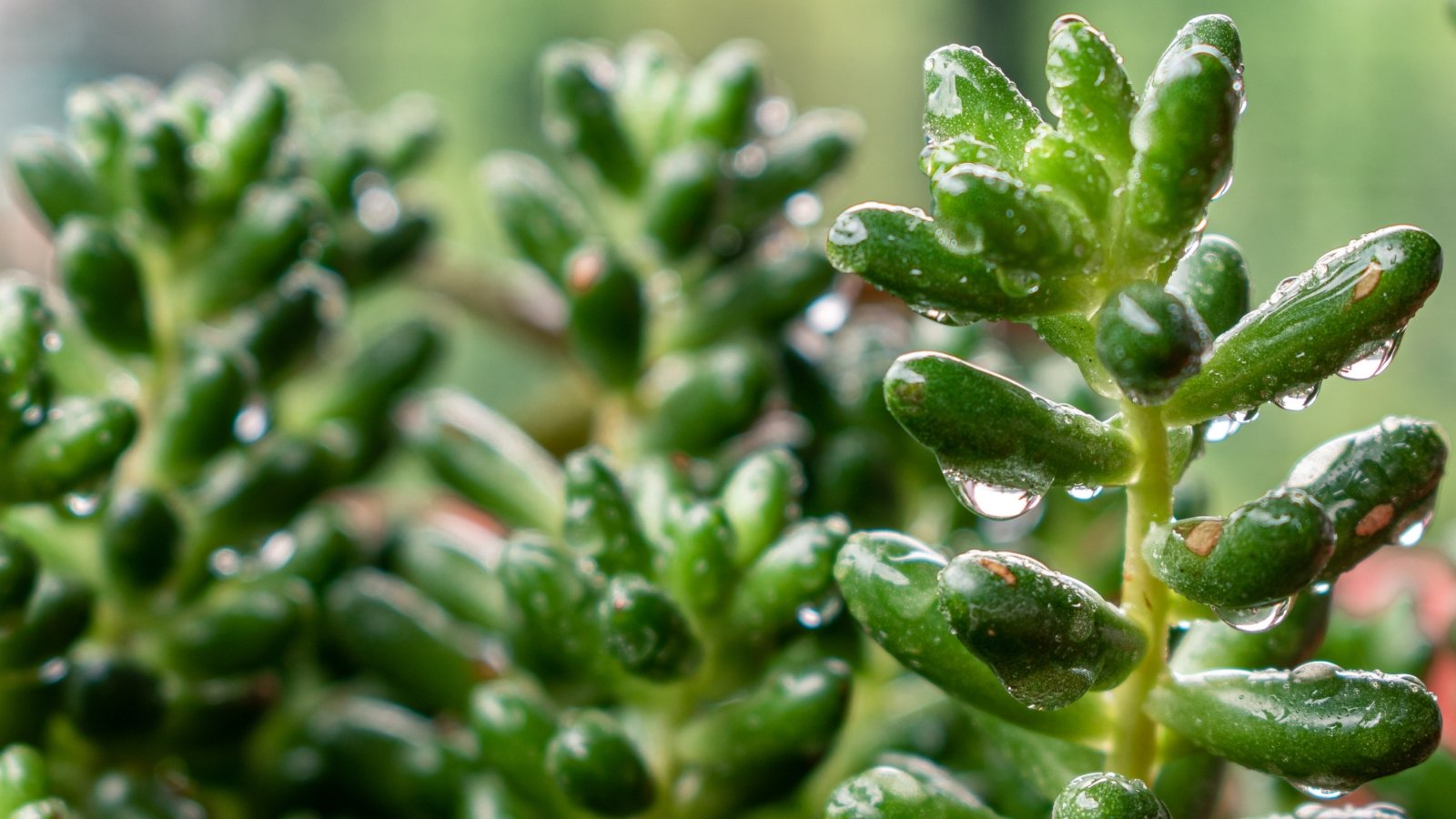
For Sedum rubrotinctum, adopting a ‘soak and dry’ watering technique is ideal. Let the soil dry out entirely before giving it a good deep watering. Avoid letting your succulent stay in waterlogged conditions for extended periods.
Overwatering poses a common threat to succulents. Keep an eye out for leaves that are mushy, discolored, or drooping. On the other hand, under-watered plants will exhibit wrinkled, shriveled, and crispy leaves.
Soil
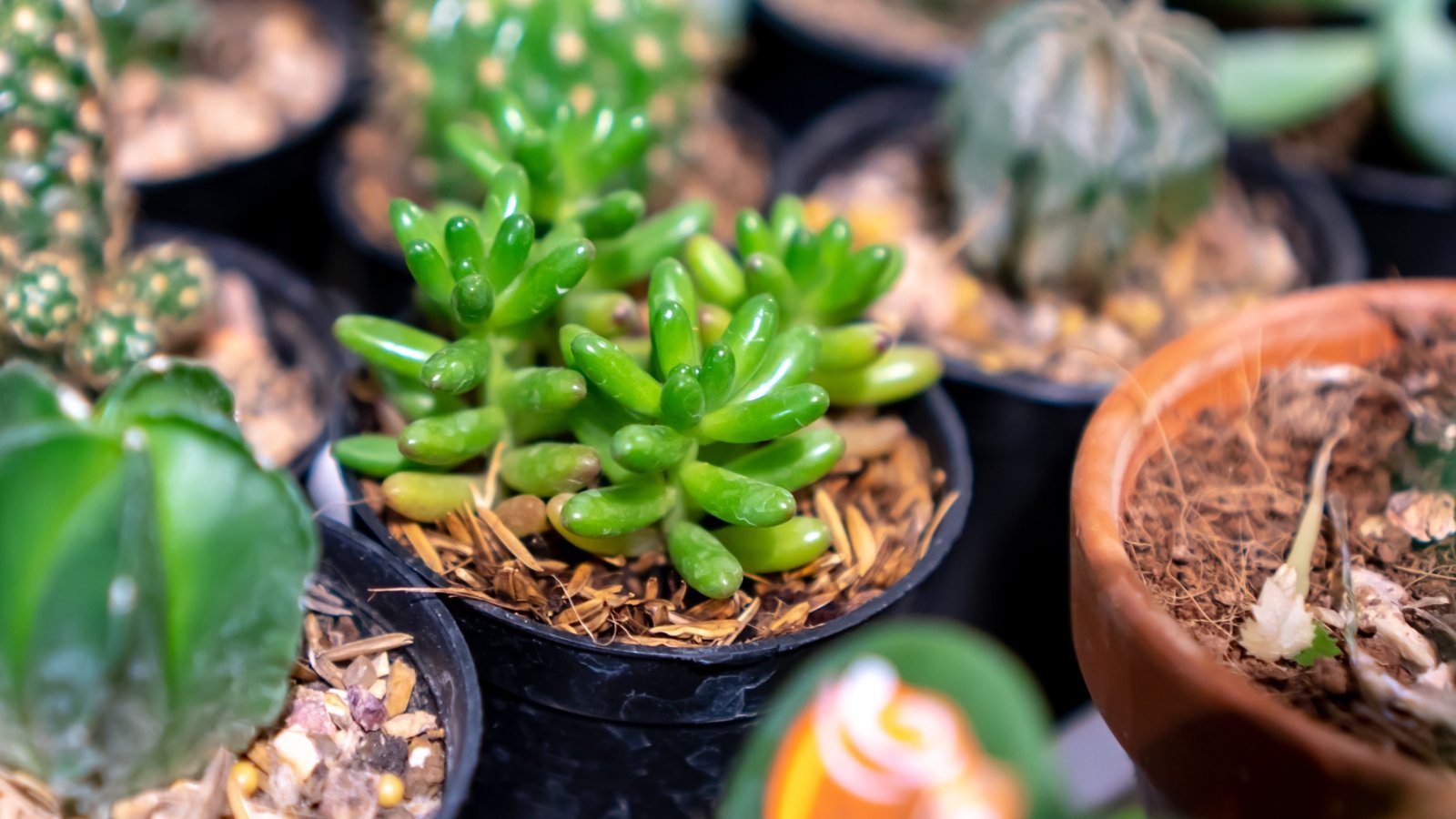
Jelly bean plants display versatility regarding soil preferences, provided the soil has effective drainage. Opt for a sandy cactus and succulent mix for optimal growth. You can either purchase this mix or create your own by blending potting soil with perlite and grit to enhance drainage.
While some plants are particular about pH levels, Sedum rubrotinctum is fairly indifferent to these nuances. It stands out as a low-maintenance option for gardening enthusiasts.
Temperature & Humidity
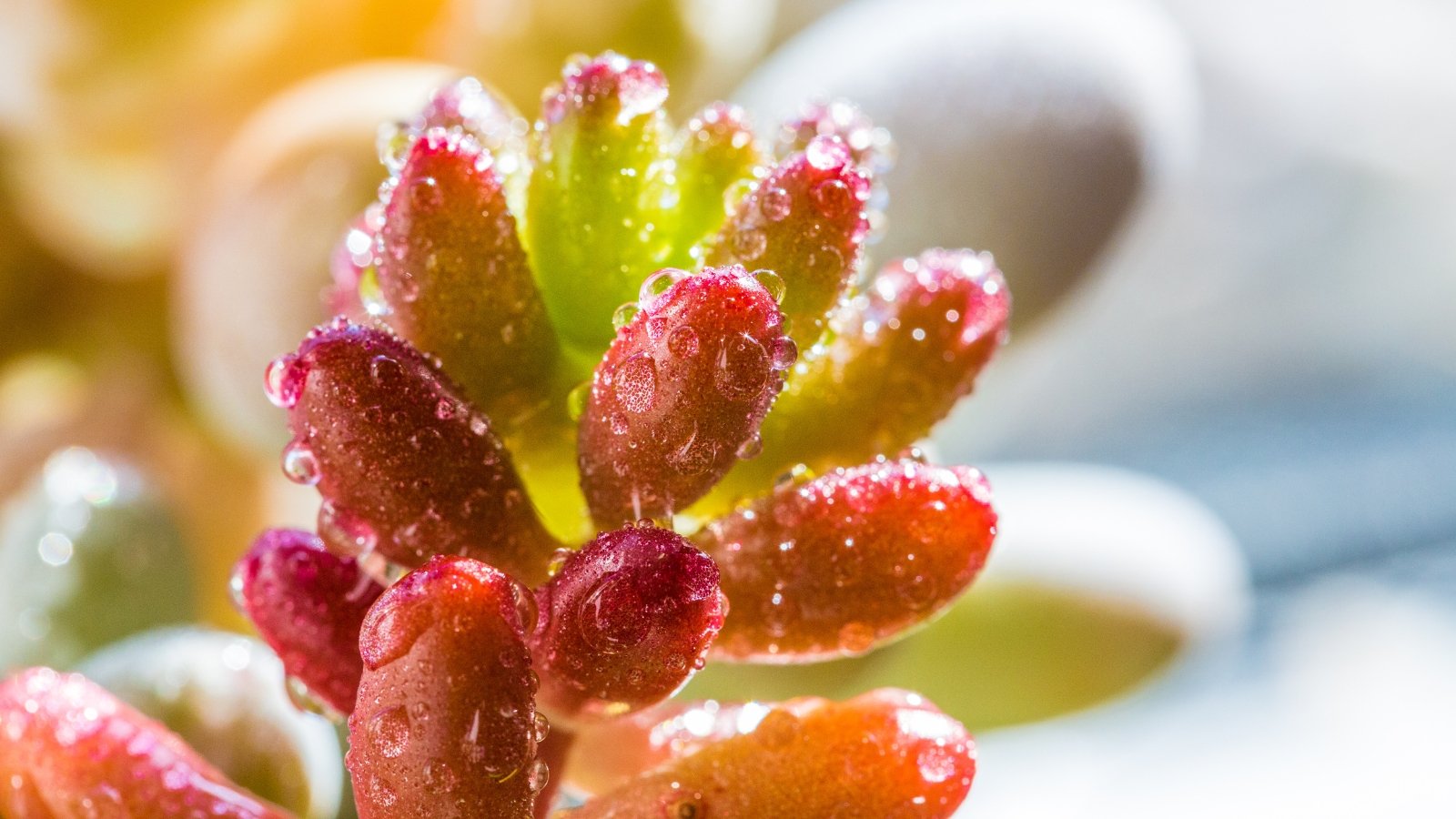
Similar to other sedums, jelly bean plants thrive in warmer conditions. They do not tolerate cold temperatures well and should be shielded from anything below 20°F (-7°C). If you reside in a colder region, consider planting in containers for easy relocation indoors or in a greenhouse during winter.
Humidity levels do not significantly bother jelly bean plants. However, higher humidity could raise the risk of fungal diseases, preventable through adequate ventilation and timely pruning.
Fertilizing
If your succulent needs a pick-me-up, especially when potted, fertilizer could be beneficial, though it’s not mandatory. Opt for a succulent fertilizer with lower nitrogen levels and apply it at half-strength to your succulent, like pork and beans.
For best results, feed your succulent high-quality fertilizer once monthly in the warmer months. If growth stagnates, consider fertilizing. If growth slows in pots after a few years, refresh the soil. Avoid fertilizing during dormancy in fall and winter.
Maintenance
If your jelly bean plant is exceeding your desired size or has unsightly stems, prune it back with clean cuts using sharp shears. Allow the cuts to dry and callus over a few days before exposing them to moisture.
Rootbound Sedum rubrotinctum plants might need repotting if the roots outgrow the container. The sprawling stems can cascade over the pot’s edge. Keep an eye on root growth, as these plants thrive with a bit of extra room.
The leaves of this succulent are prone to falling off; don’t panic if this happens. You can effortlessly propagate new plants by laying the fallen leaves on the soil near the main plant—they often take root independently. Remember to wear gardening gloves due to the potential for skin irritation from Sedum rubrotinctum.
Propagation
If you notice your succulent getting larger or rootbound, consider transplanting it to a bigger pot. Keep an eye on root growth to ensure optimal development. Remember that Sedum rubrotinctum can cause skin irritation, so handle with caution and use gloves.
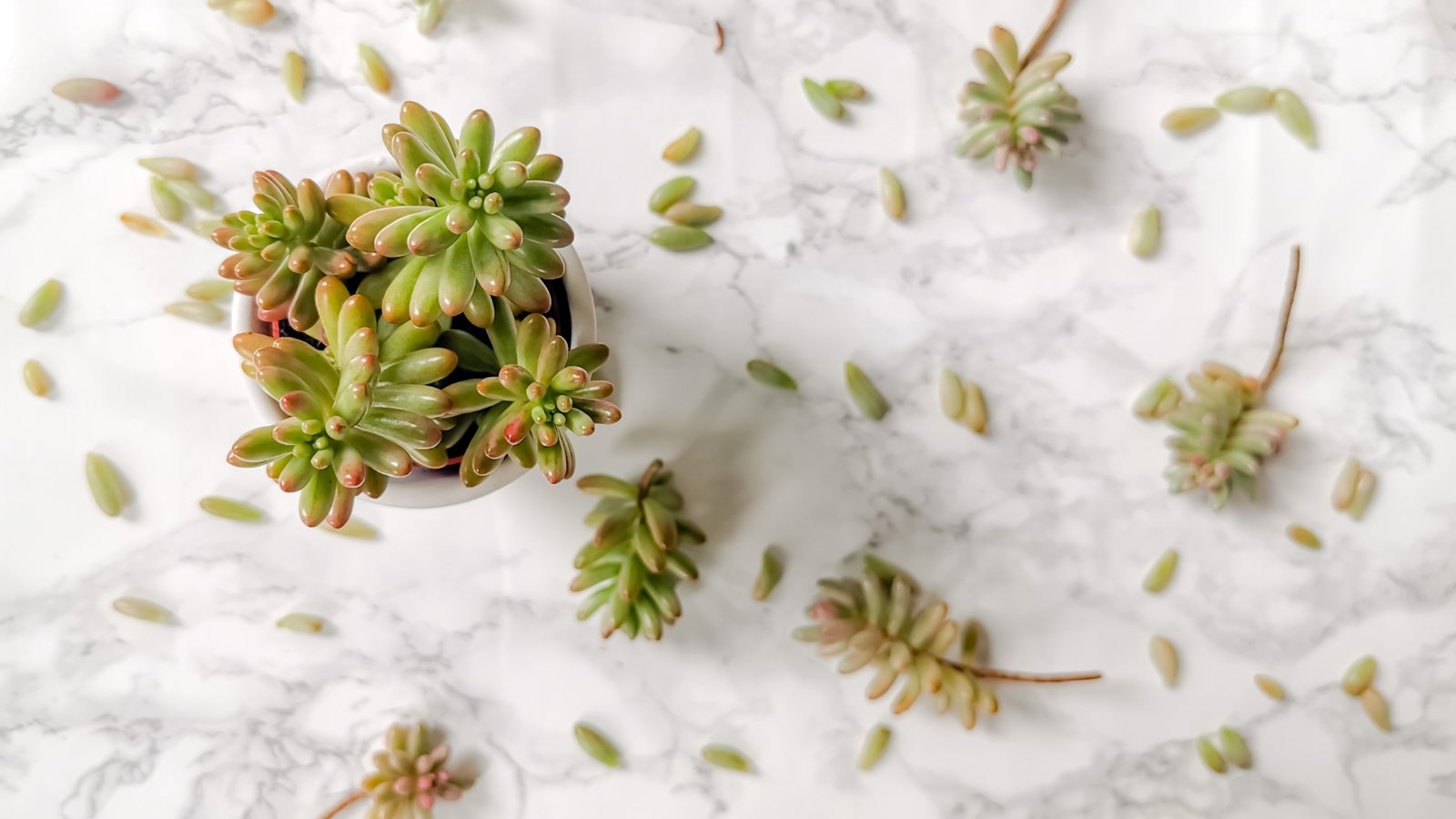
Jelly beans have a unique ability to propagate effortlessly, with leaves and stems rooting themselves easily. This simple and rapid method of propagation is a great advantage for gardeners, as the plant often reproduces on its own. To propagate using leaves and stems, select healthy parts of the plant and detach them carefully. For leaves, twist off gently from the stem, ensuring no remnants are left. Stems should be cut a couple of inches below the top.
After obtaining cuttings, allow them to dry for a few days in a shaded area to prevent sunburn. Once the cuts have dried, position them on or in well-draining soil. Regularly mist the cuttings until the roots establish firmly in the soil. As the new plant matures, gradually introduce it to standard watering and sunlight routines.
Common Issues
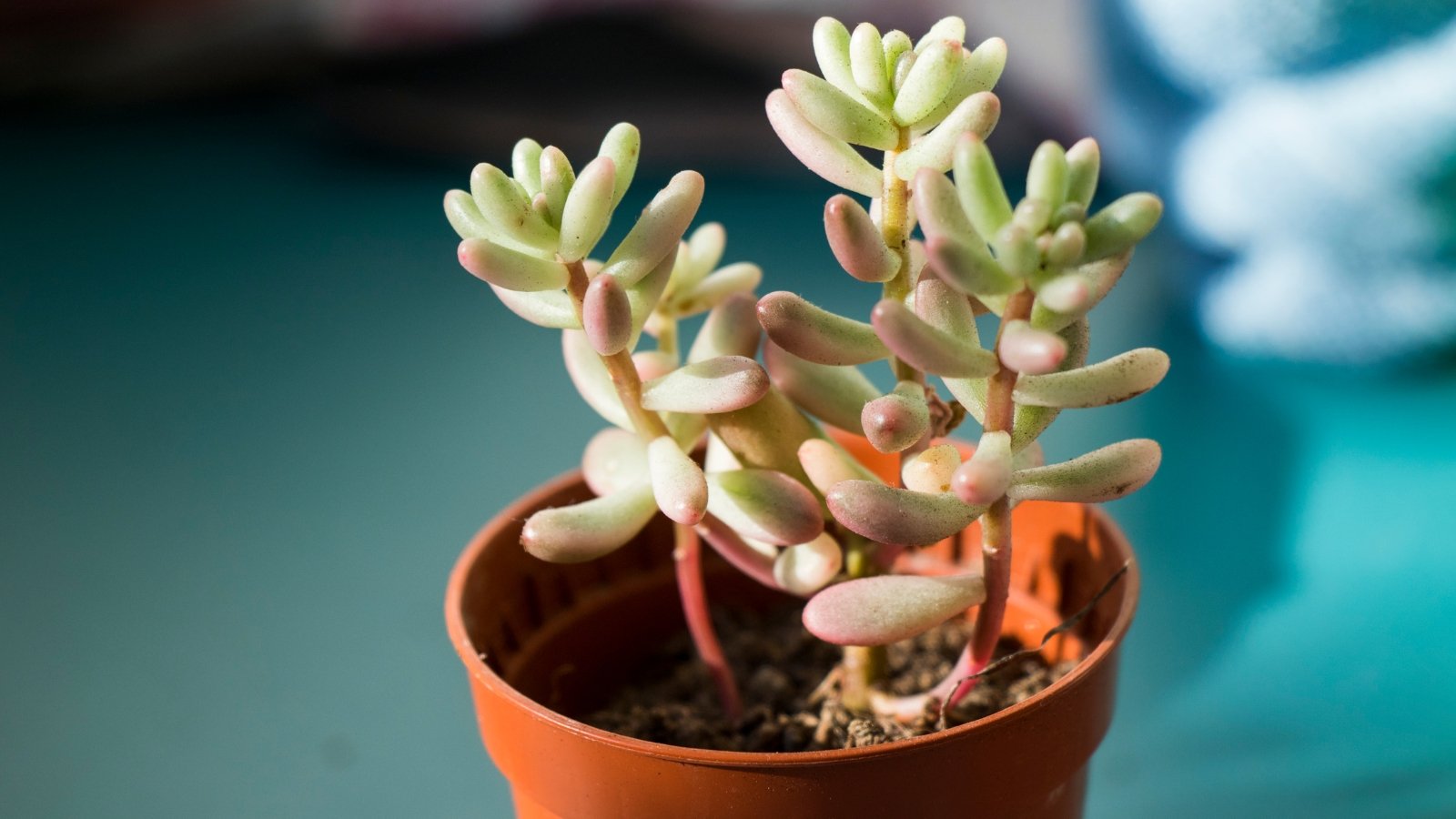
Jelly beans are notably resistant to diseases and pests, encountering issues common to succulents. Generally hardy, these plants are not prone to significant problems, making them an excellent choice for growers.
Leaf Shedding
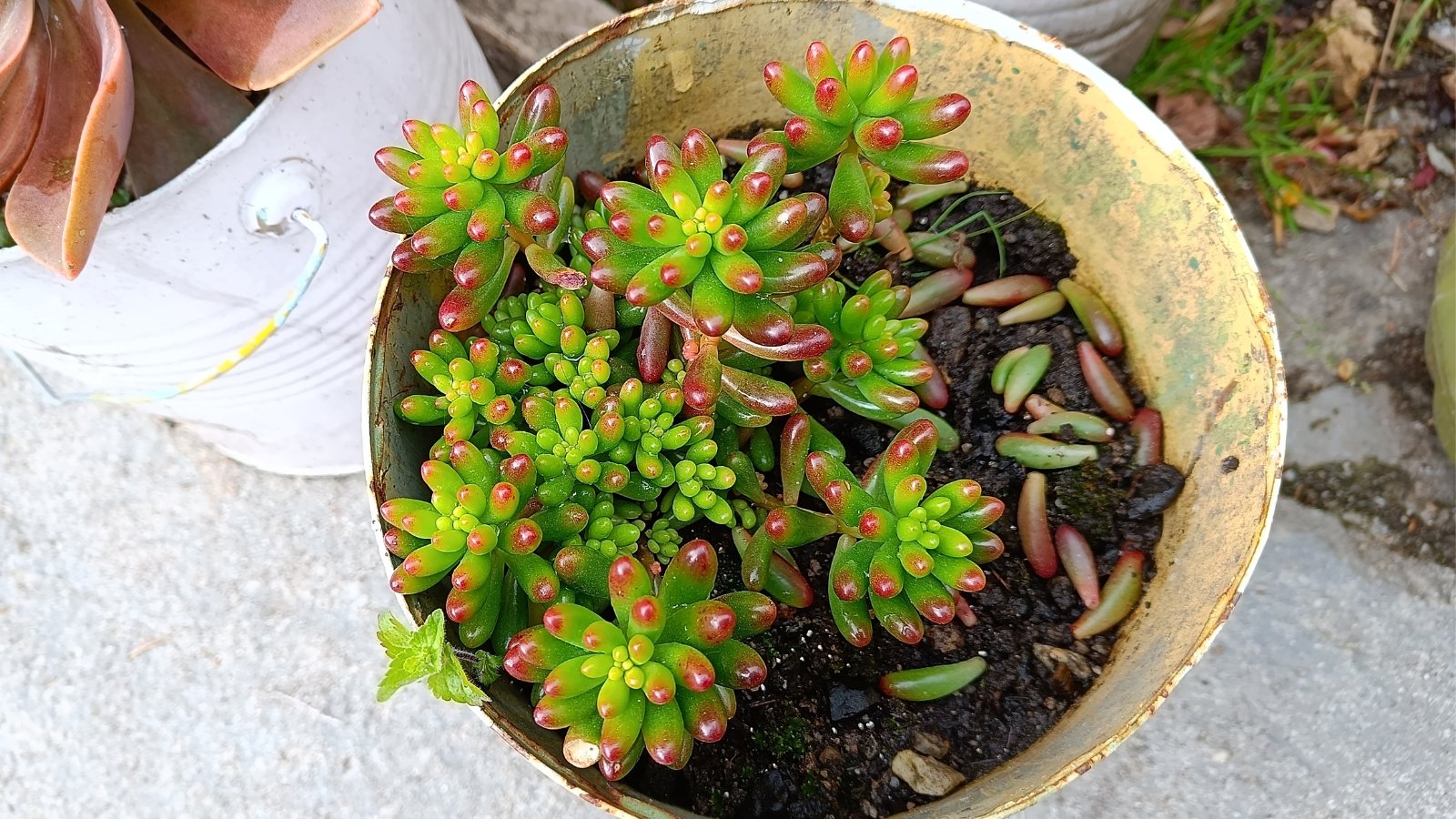
It’s common for pork and beans to shed leaves when disturbed. However, this behavior could also hint at an overwatering issue.
If you discover mushy or discolored fallen leaves, it might be an indication of poor soil drainage. To rectify this, cease watering until the soil dries out or consider repotting with dry soil.
Wilting
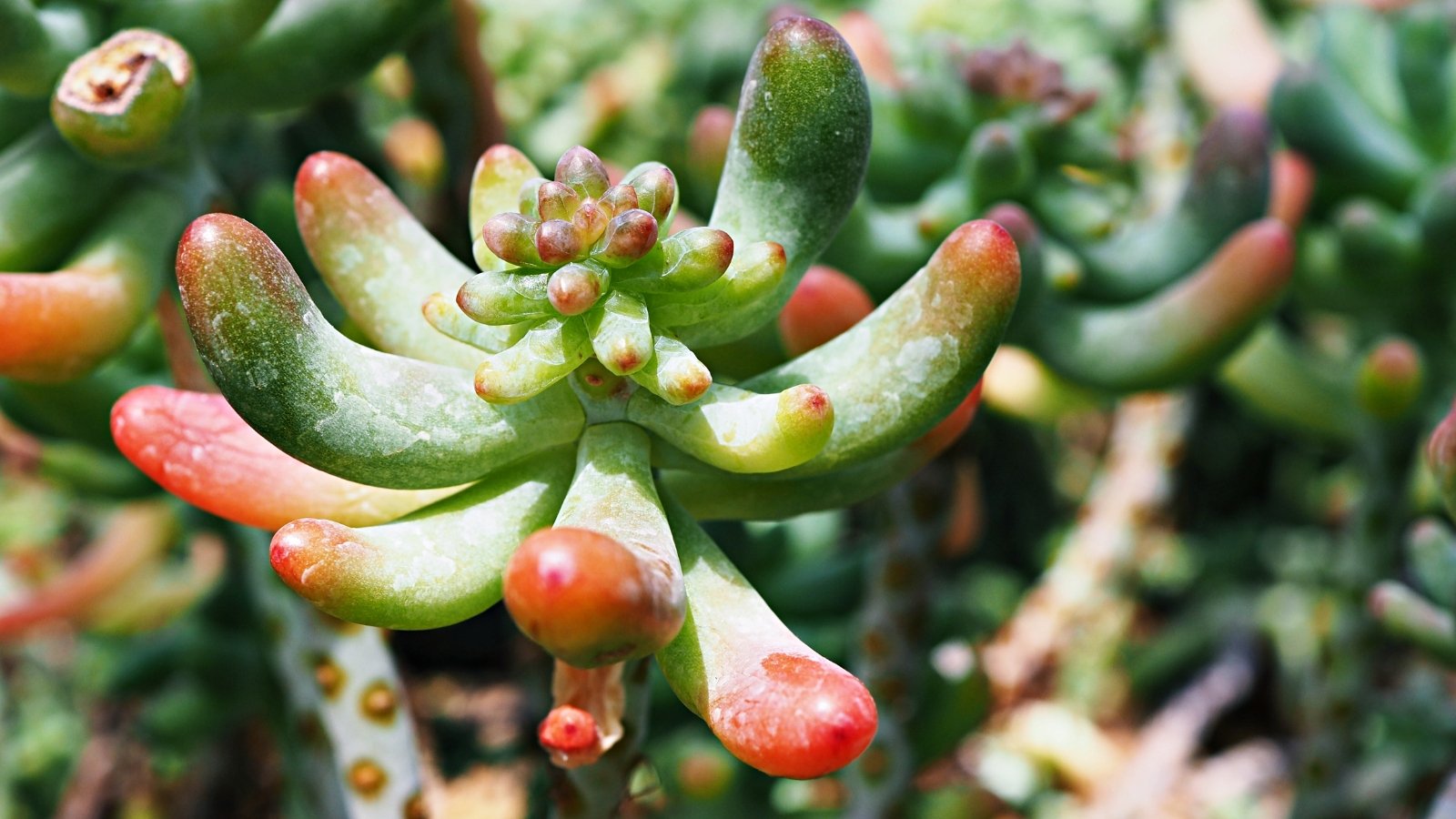
If your Sedum rubrotinctum shows drooping or wrinkled wilted leaves, it signals underwatering. To revive it, generously water and within a day or two, it should bounce back.
While it may seem wise to maintain moist soil, allow it to dry out completely before the next watering session.
Etiolation
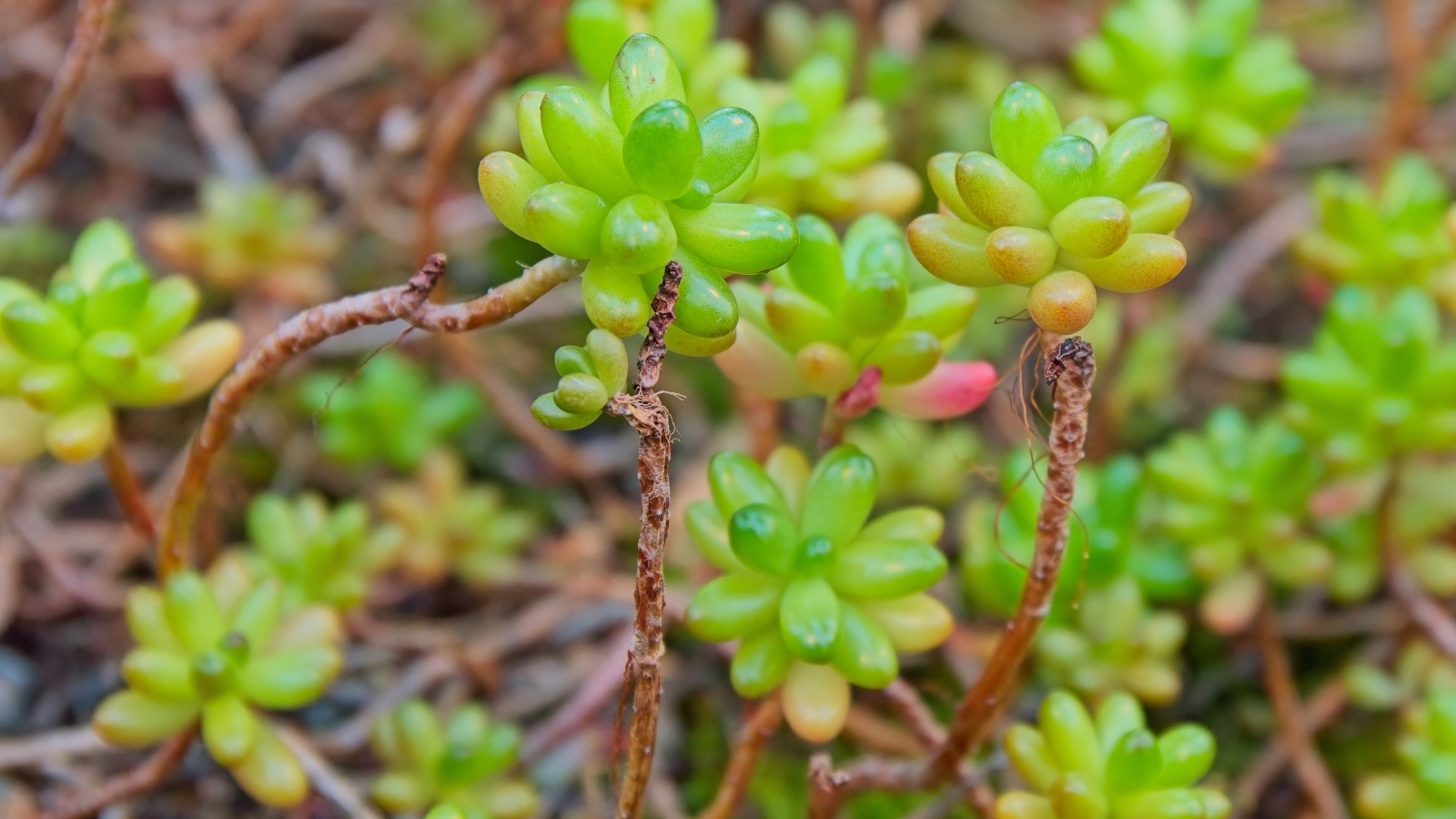
It’s common for succulents to develop stretched stems due to insufficient sunlight. If your jelly bean plant is elongated and spindly, relocate it to a sunlit spot. In case the stems have already elongated, trim them back for healthy regrowth.
Pests and Diseases
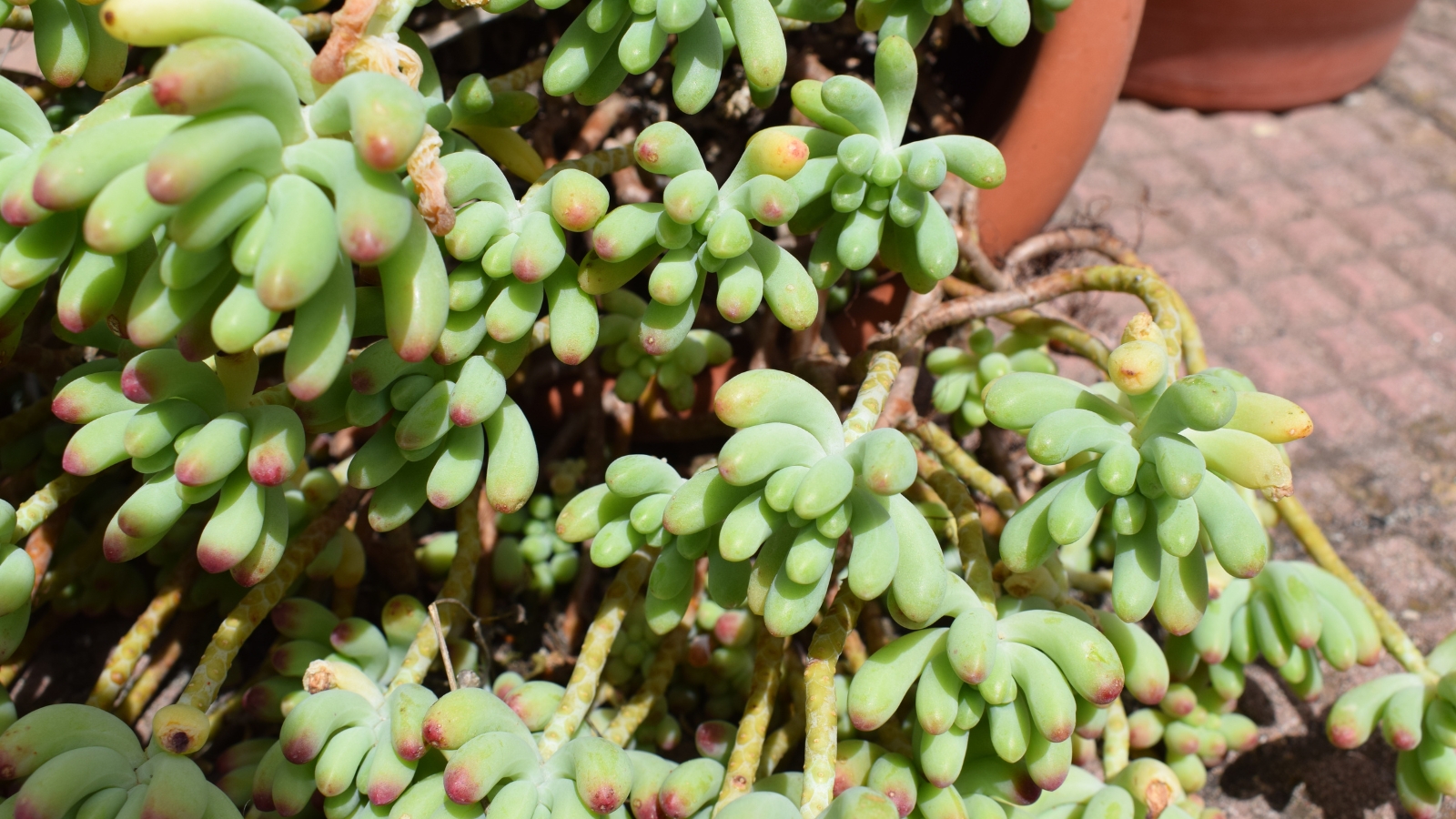
Sedum rubrotinctum rarely attracts pests. To prevent any from showing up, maintain the health of the plant and ensure the soil remains relatively dry.
Similar to most succulents, jelly beans are prone to root and stem rot, primarily due to excessive moisture in the soil or on the leaves. Rot can render the plant susceptible to other diseases and bacteria, spreading rapidly once infected. Symptoms to watch for include wilting, discoloration, and mushy flesh.
The most effective method for control involves removing the affected sections. Using a sterile knife, excise any parts of the stem or roots showing signs of disease. If a large portion of the plant is afflicted, it might be best to remove it and utilize the healthy stems for propagation.
After eliminating the rotten portions, replant your jelly beans in fresh, dry soil. Allow the wounds to callous over before resuming watering. To prevent future instances of rot, avoid overwatering the plant.
FAQs
Is Sedum rubrotinctum poisonous?
Indeed, this succulent is toxic to humans and pets and can cause skin irritation. Consider avoiding it if you have children or pets.
Why do the leaves fall off my jelly bean plant?
The leaves may shed easily upon movement or contact, indicating potential overwatering. If the fallen leaves appear discolored or mushy, adjust your watering routine.
How can I revive a dying succulent?
Overwatering is the leading cause of succulent demise. If your plant shows signs of mushiness and discoloration with waterlogged soil, reduce watering, repot in dry soil, and allow time before resuming watering.
Underwatering and rot are additional factors contributing to succulent death that need to be addressed promptly.
Final Thoughts
The jelly bean plant offers a delightful succulent option beyond its charming name. It’s a must-have addition for enthusiasts of stonecrops.



